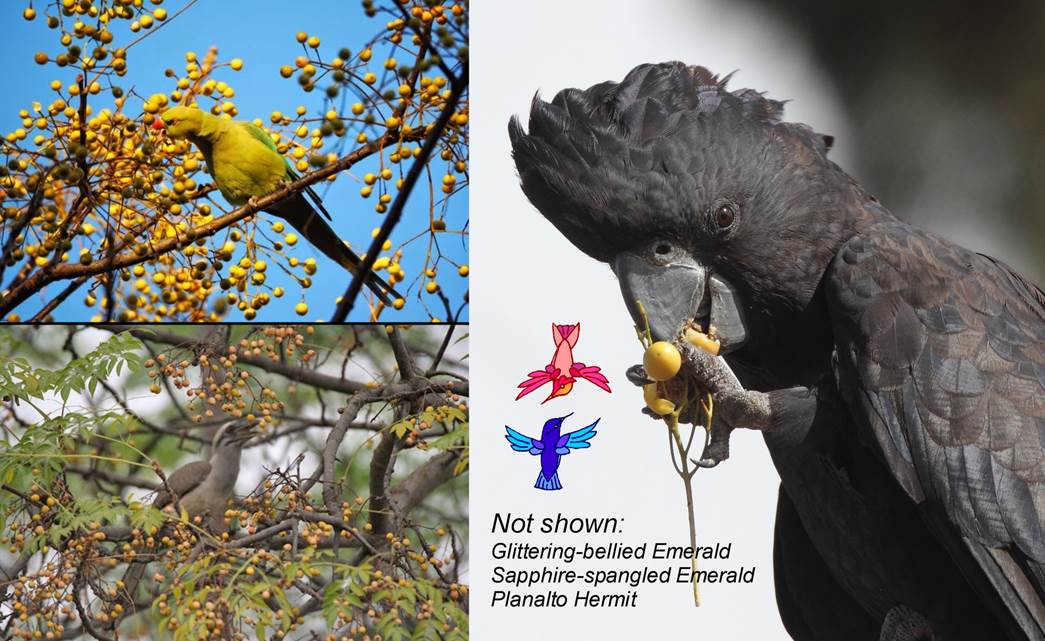Something on which I am sure opinions will vary. Some might
reasonably propose the coconut palm or a northern hemisphere conifer. I
have seen flowering callistemons in north Queensland being attended by a
half-dozen species of honeyeater, and a fruiting berrigan in western NSW can
hold its own in the best company. The question is suggested by my
receiving from a French visitor to Canberra of a few weeks ago a photo from his
garden in Toulouse. This carries the description: ‘les perruches a collier
sont perches et mangent les fruits des arbres: Melias azedarach ou Lila de
Perse’ (apologies for omitted accent symbols). The photo shows a plant
familiar to Australians: ‘our’ White Cedar. This is a common natural or
planted or feral tree over the warmer parts of Australia. In fact, its
natural range extends southward from India. There are early records of its
wider cultivation. It was planted in 879 BCE at Nimrud, the ancient military
capital of Assyria, and a Chinese test ca 300 BCE relates that the fruit was
eaten by a ‘fabulous bird’.
As to its bird-attracting credentials Wikipedia has a picture
of a Grey Hornbill enjoying the fruit, and states 3 hummingbird species have
been recorded feeding at the flowers (it is a widespread escape in N and S
America as well as Africa etc etc). Below is the parakeet of Toulouse, the
aforementioned hornbill and my own snap of a red-tailed black-cockatoo at Bourke
where both the tree and the cockatoo (seasonally) are a common sight.
There is a specimen in ANBG which I have seen being used by king
parrots.


